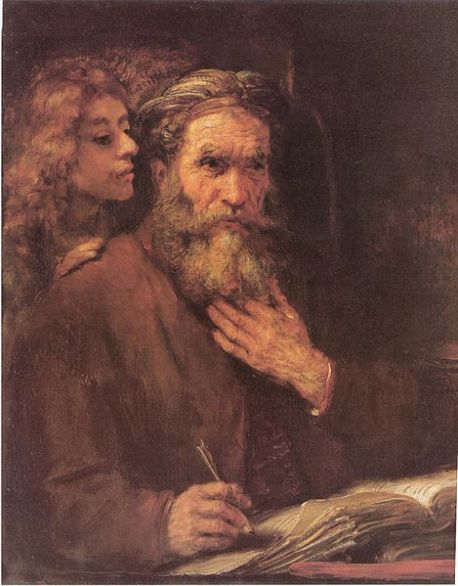Today (December 28) is the day the church commemorates the Holy Innocents. The event remembered is the infanticide carried out by the soldiers of Herod the Great. According to the Gospel of Matthew, Herod ordered the execution of all male children under the age of two, so as to avoid the loss of his throne to the newborn king, born in Bethlehem, whose birth he had heard about from the Magi. Unwittingly, he fulfilled biblical prophecy; Jeremiah prophesied, “A voice is heard in Ramah, mourning and great weeping, Rachel weeping for her children and refusing to be comforted, because her children are no more.” The number of infants killed is not known. With Bethlehem being a town of around 1000 inhabitants, the number there could be around twenty. Although not Christians these children have been seen by the church as the first martyrs.
The account of the massacre is found in Matthew 2:13-18:
“Now when they had departed, behold, an angel of the Lord appeared to Joseph in a dream and said, ‘Rise, take the child and his mother, and flee to Egypt, and remain there until I tell you, for Herod is about to search for the child, to destroy him.’ And he rose and took the child and his mother by night and departed to Egypt and remained there until the death of Herod. This was to fulfill what the Lord had spoken by the prophet, ‘Out of Egypt I called my son.’ Then Herod, when he saw that he had been tricked by the wise men, became furious, and he sent and killed all the male children in Bethlehem and in all that region who were two years old or under, according to the time that he had ascertained from the wise men. Then was fulfilled what was spoken by the prophet Jeremiah: ‘A voice was heard in Ramah, weeping and loud lamentation, Rachel weeping for her children, she refused to be comforted, because they are no more.”
Coventry Carol is a Christmas carol dating from the sixteenth century. The carol was performed in Coventry in England as part of a mystery play entitled The Pageant of the Shearmen and Tailors. The play depicts the Christmas story from the second chapter of Matthew’s gospel. The carol refers to the Massacre of the Innocents. The lyrics of this haunting carol represent a mother’s lament for her doomed child. It’s the only carol to have survived from this play. The author is unknown. The carol is traditionally sung a cappella.
The theme of the Massacre of the innocents has provided many an artist of multiple nationalities with opportunities to compose complicated depictions of massed bodies in violent action. Its popularity decreased in Gothic art but revived in the large works of the Renaissance. The massacre also provided a comparison of ancient brutalities with early modern ones during the period of religious wars that followed the Reformation. Bruegel’s versions show the soldiers carrying banners with the Hapsburg double-headed eagle (often used at the time for ancient Roman soldiers). The 1590 version by Cornelius van Haarlem also seems to reflect the violence of the Dutch Revolt. Guido Reni’s early (1611) Massacre of the Innocents is at Bologna. The Flemish painter Peter Paul Rubens painted the theme more than once. The French painter Nicolas Poussin painted The Massacre of the Innocents (1634) at the height of the Thirty Years’ War.
The massacre is the opening plot to the 2006 film The Nativity Story (great film).
The commemoration of the massacre of the Innocents, considered by some Christians as the first martyrs for Christ, first appears as a feast of the western church in the Leonine Sacramentary, dating from about 485. The earliest commemorations were connected with the Feast of the Epiphany (January 6); Prudentius mentions the Innocents in the hymn on the Epiphany. Leo in his homilies on the Epiphany speaks of the Innocents. This day is also known as Childermas or Children’s Mass.
Red is the color worn on this feast day which is the traditional color for martyrs.
Various Catholic countries used to have a traditions of role reversal between children and their adult educators, including boy bishops. In some cultures, such as medieval England and France, it was said to be an unlucky day, when no new project should be started. In addition, there was a medieval custom of refraining where possible from work on the day of the week on which the feast of Innocents Day had fallen for the whole of the following year until the next Innocents Day. This was presumably the custom observed mainly by the better-off. Phillipe de Commynes, the minister of King Louis XVI of France tells in his memoirs how the king observed this custom and the trepidation he felt when he had to inform his majesty of an emergency on the day.

